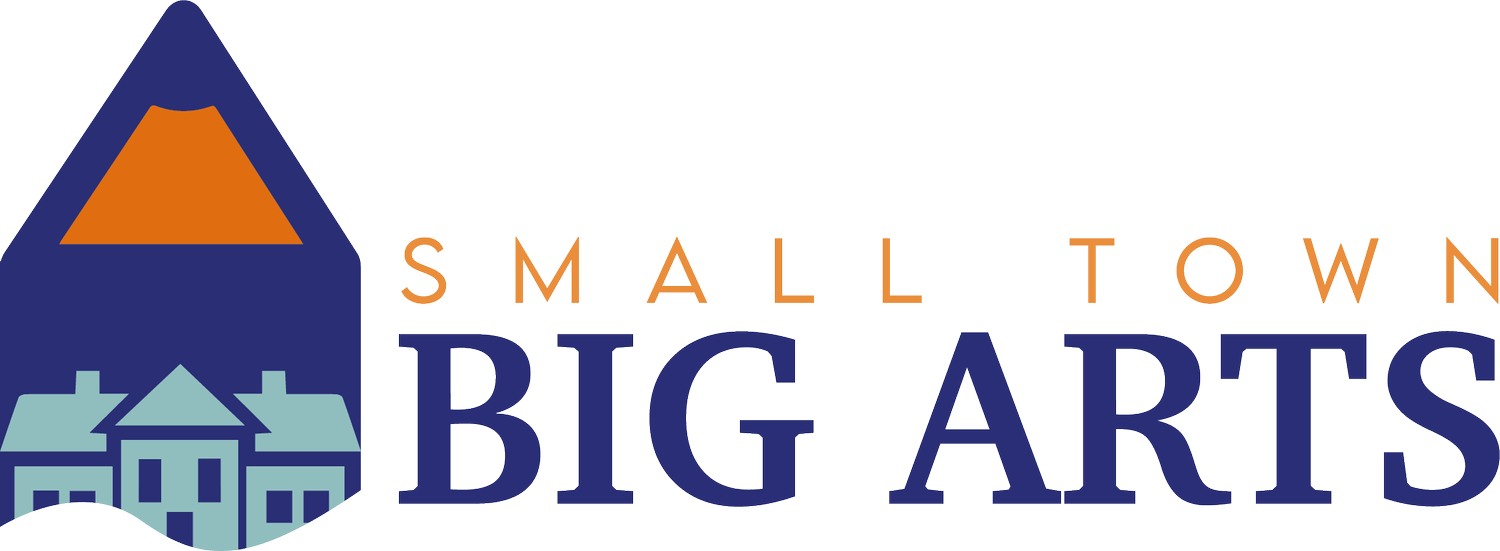The YES! House: The Evolution of a Creative Hub in Rural Minnesota
Every year I attend the Radically Rural Conference in Keene, NH. I meet some extraordinary people doing some extraordinary things. This year was no different and I was introduced to a number of organization I want to orient you to in the coming months. To begin, let’s head to Minnesota.
In the small riverside town of Granite Falls, MN, an ambitious project is unfolding: the transformation of a donated building into a vibrant community arts and civic gathering space. The YES! House stands as a strong example of how rural arts infrastructure can be designed from the ground up for collaboration and locally sourced creativity. As you may know from reading some of my other posts and listening to some of my interviews, the strongest rural arts projects utilize the creative resources and culture of a community and do not supplant them.
Origins and Site
The YES! House is located in a once vacant building and was donated in early 2018 to the nonprofit Department of Public Transformation (more about them in a future podcast and article). Rather than accepting the label of abandonment, the team took a different stance: the building was actually wanted by community members if its potential was realized. In that spirit they embraced stewardship, not ownership.
From the start, the project avoided duplicating existing assets: there was a deliberate phase of mapping community resources, learning what was already thriving, and identifying gaps rather than competing.
Design & Process
The YES! House’s programming and design were shaped by a year‐long “Artist‐Led Design Build” process. Local and national artists and architects, such as Homeboat, MO/EN Design Practice, and the Southwest Minnesota Housing Partnership facilitated this collaborative effort.
During this period the team collected input from residents: about what programming they wanted, what kinds of facilities would support creativity and civic life. This approach positions the YES! House not simply as a venue but as a reflective response to rural community needs.
Purpose and Vision
At its core the YES! House is propelled by three interlocking aims:
Creative gathering space: A place for artists, community members, and civic actors to work, meet, and generate projects together.
Community asset activation: The aim is to amplify existing local arts and civic efforts, not supplant them. By acknowledging strong assets already present in the region, the YES! House seeks to build synergy rather than redundancy.
Rural renewal through creativity: The vision embraces the power of “rural creativity” to respond to community challenges and opportunities. DoPT frames this as “developing creative strategies for increased community connection, civic engagement, and equitable participation in rural places.”
Governance & Acknowledging Structural Issues
Importantly, the narrative of the YES! House includes a transparent acknowledgement of structural inequities. The organization notes that it benefits from privileges embedded in dominant nonprofit systems—white leadership, patterns of resource distribution—and commits to an ongoing journey of humility and transformation.
In fall 2022 DoPT launched the YES! House Futures Committee to guide future operations via a community‐led process.
Current Status and Invitation
While the building is still under construction, the YES! House already hosts events, tours, and regular open hours. This transitional phase underscores a key point: the house is not waiting to be “perfect” before engaging the community, it is activating now.
Why This Matters for the Arts and Rural Communities
The YES! House offers several important takeaways for the Small Town Big Arts readers:
Artist‐led design in rural contexts: It demonstrates that credible arts infrastructure in small towns can emerge through participative processes rather than top‐down models.
Complementarity vs. competition: The strategy to map existing assets and avoid duplication is especially relevant in under‐resourced communities where overlap drains scarce resources.
Stewardship mindset: The shift from “ownership” to “stewardship” aligns with newer thinking around community‐based arts ecology—where the organization acts as custodian rather than controller.
Transparency around equity and systems: By naming the privileges the organization holds and inviting shared governance, the YES! House model pushes toward more equitable rural arts infrastructure.
Activation before completion: Engaging the community before the “final build” sends a strong message about process, access, and iterative creation.
How This Could Apply More Broadly
For small‐community arts organizations the YES! House can serve as a useful case study. Some ways to adapt it:
Use a design‐build participatory process: Invite artists, residents, youth, elders to shape program from day one.
Conduct an asset inventory: Map local arts, culture, civic, physical infrastructure—identify gaps rather than reinventing.
Frame infrastructure as “stewardship” not mere “development” to emphasize community ownership.
Embed equity reflections early: Acknowledge systems of privilege and build governance structures that share power.
Activate before completion: Even with partial capacity, start hosting events, gathering feedback, adapting.
Define success broadly: Not only visits or revenue, but connectivity, resilience, community agency.
Final Thoughts
The YES! House is more than a building. It is a micro‐model of what rural arts infrastructure could become: locally grounded, creatively anchored, governance‐aware, and community‐led. For those leading the arts in small communities, it offers fresh inspiration and tangible lessons for how arts administrators can collaborate with rural places to build places and programs that resonate, endure, and evolve.

